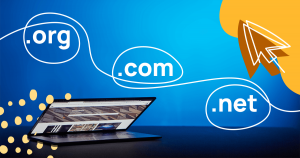It’s easy to know what remarketing is. This strategy’s focus is showing through ads what leads and consumers are interested in. Through browsing data, companies can make personalized offers that can generate more conversions.
That is a common goal for any company establishing a Digital Marketing strategy.
To do this, understanding what is remarketing turns into a fundamental point. The reason is simple: that strategy is one of the best methods to generate sales from ads.
When analyzing metrics, it’s usual to see higher numbers of visits in certain product pages and services offered on a website.
The interest of the consumer can mean a predisposition to buy.
Remarketing is the strategy that enables a company to transform this interest into concrete sales, generating conversions from specific actions.
In this post, we’ll talk about remarketing, addressing the following topics:
- What is remarketing?
- What are the benefits of this strategy?
- Which are the 3 main tips for using remarketing?
Continue reading this post to find out!
What is remarketing?
Remarketing is a Digital Marketing strategy to generate more sales from the consumer’s previous interest registered.
The effort focuses on creating ads on Google Ads network, so it’s possible to show these products, services, and content again to the user.
As a web user, you have come across ads that show products and pages you have already visited.
There’s no spying or anything like that. It’s simply the browsing data generated, the well-known cookies. Websites keep them and then understand the user’s interests.
By tracking all this browsing, it becomes possible to generate ads offering again what has previously interested the user.
That method is the reason the strategy’s name is remarketing or, in other words, a continuous attempt to convince the consumer to close a purchase.
What motivates remarketing?
It’s simple: if the consumers have already shown an interest in some product by visiting your website, they’re likely to be at the stage of a purchase decision.
The chances of convincing them are higher, so if you keep showing what they are interested in, they might buy it.
The work of attraction, engagement, and conversion is usually long, but when the customer is already interested in buying, this cycle is reduced.
In some cases, they went through the entire marketing funnel but hesitated at the point of conversion.
Remarketing is a company’s way of reminding them about their interest by presenting the opportunity again.
How does this strategy work?
Everything works from cookies. Through this information, websites can detect user activities.
If those people have searched for a particular service or product, it’s possible to know. From that point on, the job is to generate the ads on the Google network.
Ads need to be served long enough to generate the conversion. Usually, remarketing campaigns run about 30 days, or until the consumer makes the purchase.
These campaigns can run in two ways: Google Display Network or Search Network. The first one consists of banners that will appear on various pages during user browsing.

The Search Network will show ads at the top of Google’s results page. They’ll appear every time the user searches on a topic related to their interest.
What are the benefits of this strategy?
We should also direct part of the understanding of what is remarketing to its benefits.
As one of the most direct methods of approach in Marketing, it’s natural that results should be more concrete.
That refers not only to sales but also to brand awareness.
We’ve listed some benefits for you to understand a bit more about how this strategy favors brands and what the gains are.
Generate more conversions
Conversions are always valuable. In any strategy adopted, generating actions in consumers represents some gain, regardless of their worth.
In some cases, selling is the goal, but in others, a simple ebook download is an intention.
You need to position points of conversions at different stages of the marketing funnel.
In the lead education stages, downloading a content makes all the difference. In the same way, from those at the decision stage, it’s expected the purchase of a product.
Remarketing helps achieve any of these goals. To do so, the offer displayed on the banners or the Google results page must be accurate.
Generate sales
As you’ve seen, sales can be one of those results that conversions bring.
For businesses, it can be frustrating to have consumers who make it to the end of the funnel but don’t convert.
Remarketing is the best way to get them to reconsider and then buy.
Sales are the most worthwhile goals that you can achieve with remarketing.
Many consumers visit product pages but don’t always purchase for various reasons.
Especially with ads on the Display Network, showing the product regularly is a strategy that has a psychological side.
Reinforcing this purchase desire is one of the main motivational factors of the strategy.
Personalized offers
Consumers are much more likely to react positively to a remarketing ad, and statistics say that: 30% of people are more receptive to this strategy.
Part of this can be linked to the fact that the offer is personalized.
Ads base on cookie registers, which represent the history of browsing of these users.
Automatically, remarketing will offer what they showed interest or pages they accessed, customizing this offer.
While it’s a more personal approach, it’s also accurate. If the consumer has already demonstrated interest once, customizing the offer brings concrete results.
Brand activation
Also, to direct conversion results, remarketing brings benefits to the brand. Appearing at various times in banners or search results is also an activation strategy.
As much as the users already know your brand, remarketing allows them to see it frequently.
That generates more impact and, applying that strategy on a large scale, many more potential consumers start to notice the brand.
As a result, the public will remember the name of the company more often.
It happens especially with the association to the product present in the ads. At the time of purchase, those chances of the consumer opting for this brand grow a lot.
Which are the 3 main tips for using remarketing?
Now that you know what remarketing is and what benefits that strategy brings, it’s time to understand some key execution points.
Next, check 3 main remarketing application tips and learn why they are so crucial for good results!
1. Base your campaigns on cart abandonment
Cart abandonment is one of the most critical metrics that concern e-commerces the most.
If the consumers gave up the purchase in the final moment, it’s because something didn’t please them. After analyzing what generated the giving up, it’s time to work on the offer again.
From this metric, the remarketing strategy should contemplate all users who gave up on the purchase at checkout.
That will give them a second chance, as well as cover those who visited the product page but didn’t interact.
This strategy can provide excellent results, as long as you identify the problem that generated the dropout. Fixing it increases the chances of conversion from remarketing.
2. Set up Email Marketing campaigns
Google Ads are the main but not the only way of running remarketing campaigns.
Email Marketing can be a great option, as long as you use the right mailing list.
It’s essential to trigger messages to:
- visitors to the product pages;
- visitors to the website;
- people who have researched your brand name;
- consumers who have abandoned the cart.
For each of these groups, it’s possible to generate a mailing list with a high number of contacts.
Messages need to be customized for the mailing lists, creating higher conversion chances.
3. Make ads for those who searched the website
Google Ads also allows you to target your remarketing campaigns to those who have searched the page name on Google.
You can filter in different ways, like:
- users who have searched for the name of a brand product;
- users who searched for the company’s name;
- searches that match the business segment.
As much as this segmentation isn’t directed to those who visited the website, it’s possible to expand the reach of the campaign.
In these cases, remarketing can work as the missing incentive to generate the desired conversions.
It’s easy to find out what remarketing is. The challenge is to develop effective campaigns for your strategy. Throughout this content, it was possible to learn more about this practice and how it can be efficient.
Now that you know what is remarketing put these 3 essential execution tips into practice. Be sure to consider your company’s goals, such as increasing traffic to a particular page on the website or generating conversions.
If you want to boost your conversions, you can combine the remarketing strategy with the retargeting technique. Read our article on what retargeting is and how does it work!







